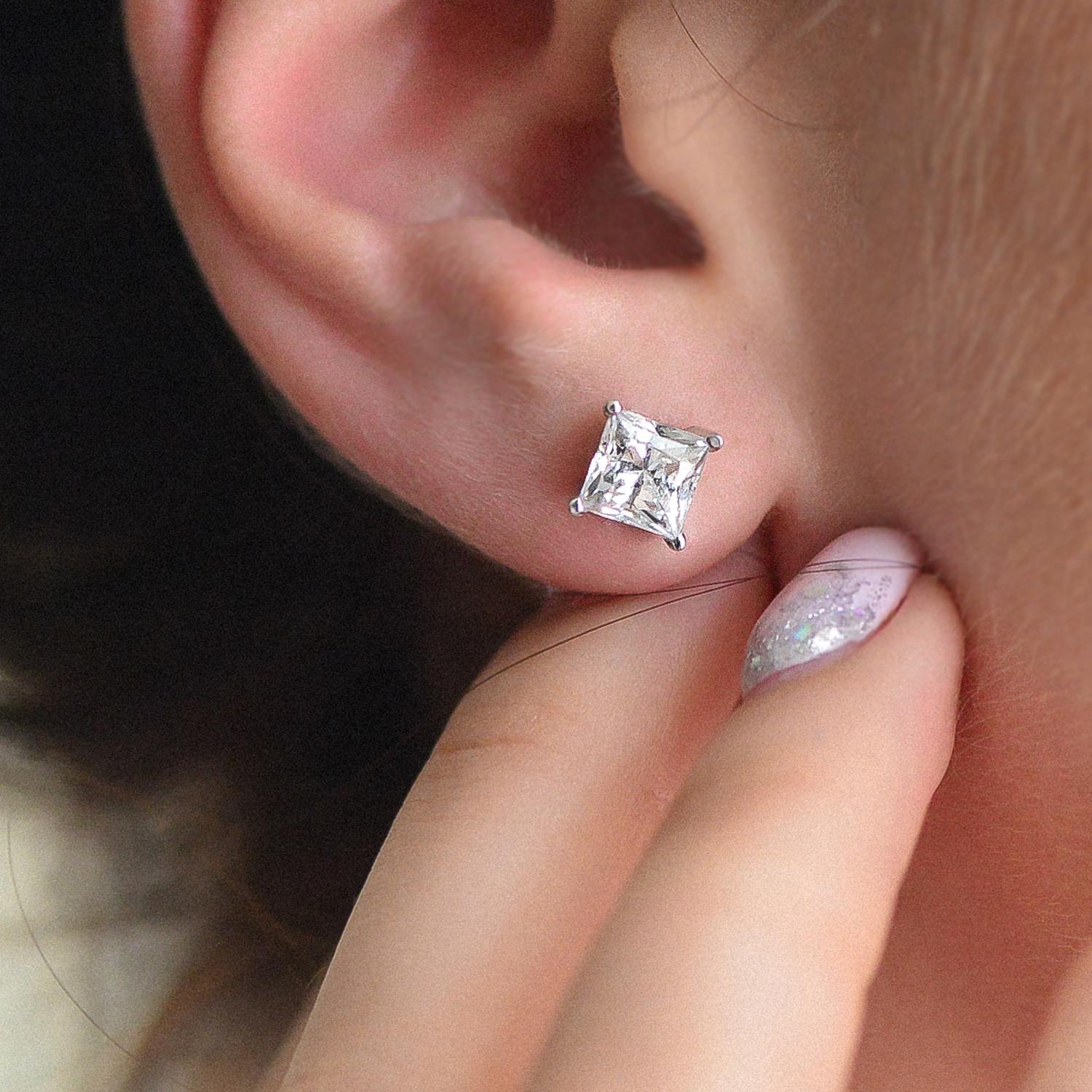
Is it just us, or are diamonds getting more and more confusing to shop for? Diamonds are the ultimate statement of luxury and we love a great shopping trip for diamond jewelry. But with the avalanche of diamond jewelry shops, the big difference between prices, and the confusing choice of natural versus lab-grown diamonds, do you find yourself in a bit of a pickle looking for the right piece of jewelry?
We’ve gathered the 10 common myths about diamonds and have confirmed their validity from a true diamond expert, Brillianteers.com. These are common questions about diamond jewelry, information that we thought to be true (but are not actually correct), and general misconceptions about diamonds that you need to know about.
Myth: You need to look for FLAWLESS diamonds
The first misconception about diamonds is the fact that most of the internet insists that you look for a FLAWLESS diamond for it to be worth buying. But this is simply not true.
Natural earth-mined diamonds form deep within the earth’s crust and most diamonds have inclusions and imperfections within the stone. The reason why you are encouraged to buy flawless diamonds is that these are relatively rare, and therefore, are sold at very expensive prices. The more money you spend, the better it is for the shop you’re buying from.
The reality is that, unless you can afford to buy flawless diamonds, you shouldn’t have to. There are diamonds that are eye-clean that are more affordable than a diamond that is flawless.
What is an Eye-Clean diamond?
An eye-clean diamond has inclusions that are so small, they are only visible under a microscope and a bright light. Their flaws will be so small that they look flawless to the naked eye. VS2 to VVS1 diamonds are eye-clean. You will not see any inclusions with the naked eye.
Myth: Stay away from Clarity Enhanced Diamonds
Clarity enhanced diamonds are natural diamonds with inclusions that are visible to the naked-eye, and are treated to remove these visible imperfections. The myth around clarity enhanced diamonds is that these are deceitful and should be avoided. The problem with this myth is that it refers to diamonds being sold as “flawless”, but are, in fact, clarity enhanced. This gives jewelers the opportunity to sell cheap diamonds at higher prices.
On the other hand, clarity enhanced diamonds are a great option if you’re looking for an affordable alternative to the regular price of diamonds. The key to finding the right pieces of jewelry that aren’t sold with a deceitful intention is looking for shops that are transparent with their use of clarity enhanced diamonds.
Have a browse at these 1 carat diamond engagement rings. Some are significantly more affordable because of their use of clarity enhanced diamonds. This is a great choice if you’re looking to buy particularly larger diamonds at a lower price.
Myth: Lab-grown diamonds are not real diamonds
This is a big topic amongst the diamond community, and has been ever since scientists discovered how to create diamonds in a laboratory. There’s a big misconception that lab-manufacutred diamonds are not real diamonds. This is simply not true.
Diamonds are prized for the fact that they form for millions of years under the pressure of the earth’s crust. The only way we obtain these natural diamonds is by mining them. But with the high demand for diamonds, scientists wanted to create these in a laboratory setting.
Lab-grown diamonds are created by mimicking the same conditions in which natural diamonds form. They are produced in a controlled process that uses the same materials, conditions and chemical properties that make up naturally forming diamonds in the earth’s crust. This is why it makes it almost impossible to know or see the difference between a natural diamond or a lab-grown diamond.
Because lab-grown diamonds form in the same way natural diamond do, they also have similar inclusions and imperfections and earth-mined diamonds. The biggest difference between the two is that lab-grown diamonds are anywhere between 30% to 70% cheaper than earth-mined diamonds; making them a great affordable alternative to earth-mined diamonds.
The important part: Make sure all your diamonds are ethically sourced!
With diamond jewelry standing as such a big staple in everyone’s every day collection, there’s one important factor you should always consider before shopping. That the diamonds you are purchasing are ethically sourced. Always look for the Kimberly Process Certificate when shopping for diamonds. The Kimberley Process unites administrations, civil societies, and industry in reducing the flow of conflict diamonds in the market. The certificate guarantees that you are purchasing a diamond that is ethically sourced and have not been obtained through unethical processes.
Consider these myths when shopping for your perfect piece of diamond jewelry. Don’t hesitate to ask questions when it comes to your purchase. Learn more about the jewelers you are buying from and don’t shy away from asking for affordable alternatives such as clarity enhanced diamonds and lab-grown diamonds! Diamond jewelry is a forever-investment, and you should be 100% happy with what you purchase!



